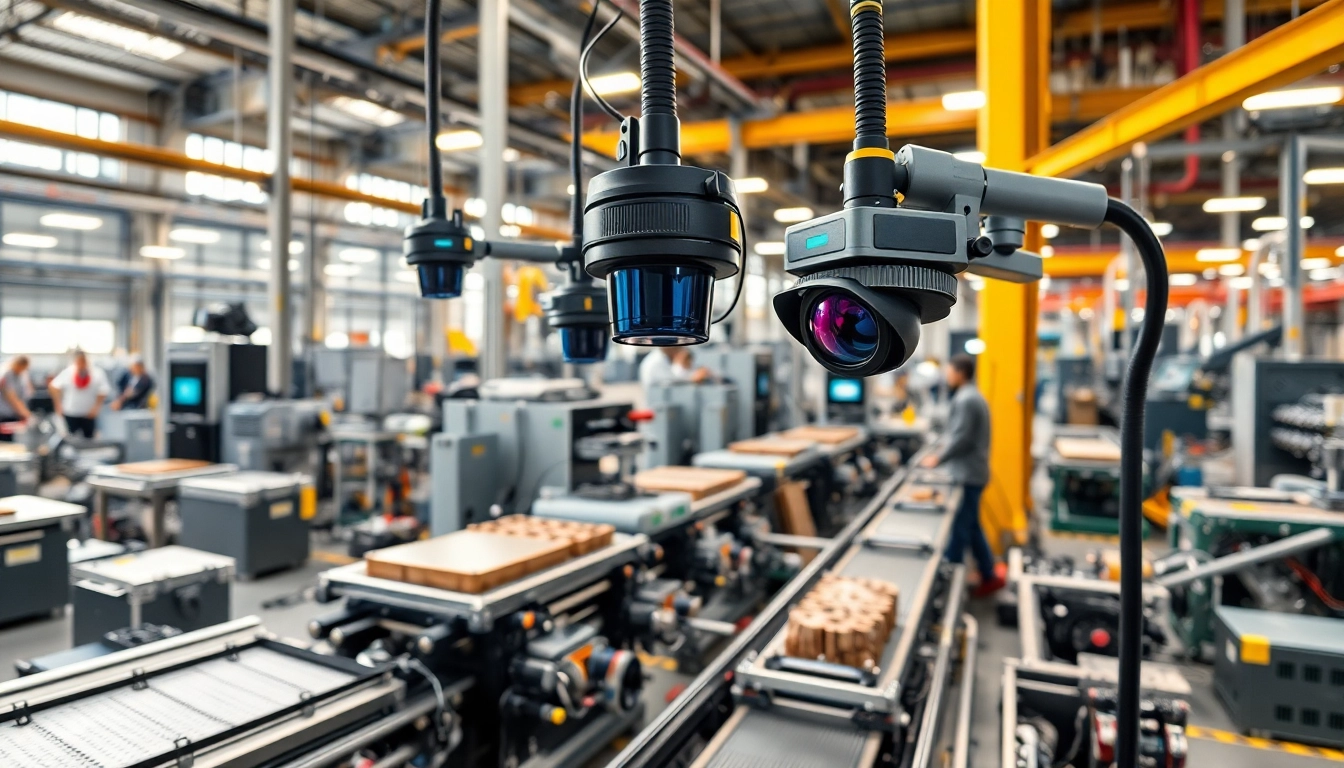
1. Introduction to Machine Vision
In today’s rapidly advancing technological landscape, machine vision stands out as a cornerstone of industrial innovation. This technology mimics human vision to enable automatic inspection and analysis, transforming various industries by integrating artificial intelligence and image processing capabilities into their operational workflows. As organizations increasingly turn towards automation to enhance efficiency and precision, an understanding of machine vision becomes essential for both technical and business professionals alike.
1.1 What is Machine Vision?
Machine vision refers to the technology and techniques that enable machines to interpret and act upon visual data. It employs high-resolution cameras and sophisticated algorithms to capture images, process them, and make autonomous decisions based on visual inputs. This can include everything from counting products on a production line to identifying defects in manufactured goods. The underlying process can be likened to how humans perceive their environment, but it operates at a speed and accuracy level that far exceeds human capabilities.
1.2 Key Components of Machine Vision Systems
A comprehensive machine vision system generally consists of several key components:
- Cameras: These are critical for capturing images; they can be either 2D or 3D, depending on the application.
- Lighting: Proper illumination is essential for image clarity, as it helps in enhancing contrast and reducing shadows.
- Image Processing Software: This software analyzes captured images, extracting relevant information and enabling pattern recognition.
- Output Devices: Systems often integrate with output devices like controllers, which execute actions based on analysis results.
1.3 Importance in Various Industries
Machine vision is revolutionizing numerous sectors:
- Manufacturing: In production lines, machine vision systems facilitate quality control, ensuring products meet specified standards.
- Automotive: Machine vision aids in the inspection of complex parts, enhancing safety and reliability.
- Logistics: Automated sorting and shipping processes rely on machine vision for efficient operations.
- Aerospace: Machine vision systems play a crucial role in inspecting components that ensure operational safety.
2. Comparing Machine Vision and Computer Vision
2.1 Key Differences Explained
While both machine vision and computer vision utilize similar technologies—such as sensors and algorithms—there are distinct differences between the two:
- Machine Vision: Primarily focused on industrial applications, it emphasizes the quality of inspection, automation, and process control.
- Computer Vision: Encompasses a broader range of functionalities, including non-industrial applications like facial recognition, medical imaging, and augmented reality.
2.2 Common Applications for Each Technology
Machine vision applications are commonly found in:
- Defect detection and classification in manufacturing.
- Automated assembly verification in electronics.
- Barcode and QR code scanning for inventory management.
In contrast, computer vision finds its usage in:
- Facial recognition for security systems.
- Gesture recognition in human-computer interaction.
- Image and video analysis in the entertainment sector.
2.3 The Future of Machine Vision in AI
As artificial intelligence continues to evolve, machine vision systems are expected to integrate more sophisticated algorithms that enable learning and adaptation. This will enhance their ability to handle diverse tasks, improve decision-making processes, and minimize errors in real-time. The future may very well include fully autonomous machines equipped with advanced vision capabilities that continuously learn from their operational environments.
3. Types of Machine Vision Systems
3.1 1D vs. 2D Machine Vision Systems
Machine vision systems are categorized based on the dimensionality of the images they process:
- 1D Machine Vision: Focuses on linear imaging and is useful in applications such as barcode scanning and product counting.
- 2D Machine Vision: Delivers complex image analysis for inspections such as surface checks and geometric measurements in parts.
3.2 3D Machine Vision Systems Explained
3D machine vision systems utilize advanced technologies such as laser triangulation and structured lighting to capture depth information. These systems are essential for applications that require precise spatial data, such as robotic guidance and assembly line automation. The ability to perceive depth allows these systems to handle complex tasks like part-in-place verification and size measurement in three-dimensional space.
3.3 Spectral Imaging and Color Vision
Spectral imaging systems extend beyond standard color imaging to analyze the spectral composition of surfaces. This technology is particularly beneficial in applications involving food safety, pharmaceutical manufacturing, and materials inspection, where color variations can indicate potential defects or quality issues.
4. Implementing Machine Vision in Operations
4.1 Steps for Successful Integration
Implementing machine vision technology requires strategic planning and thoughtful execution. Key steps include:
- Assessment: Evaluate the specific needs and objectives of the operation.
- System Design: Design a system tailored to the unique requirements, including selecting appropriate hardware and software.
- Pilot Testing: Conduct pilot tests to troubleshoot and refine the setup before full implementation.
- Training: Ensure all personnel involved are adequately trained to leverage the new system’s capabilities.
4.2 Common Challenges and Solutions
Despite the benefits, organizations may encounter several challenges when integrating machine vision systems:
- Complexity: Systems may require integration with existing IT infrastructure. Employing an experienced vendor can simplify this process.
- Cost: Initial investments can be significant, but long-term savings through efficiency and quality control make it worthwhile. A strong business case and ROI analysis may support financing.
4.3 Measuring Performance: Key Metrics
To effectively evaluate the success of a machine vision implementation, organizations should track performance metrics such as:
- Detection Accuracy: The percentage of correctly identified defects or anomalies.
- Processing Speed: Time taken to complete image analysis tasks.
- Return on Investment (ROI): Financial returns compared to the costs associated with system deployment and maintenance.
5. Case Studies and Real-World Examples
5.1 Successful Implementations in Manufacturing
One notable example includes a leading automotive manufacturer that integrated machine vision systems for quality assurance on assembly lines. This resulted in a 30% reduction in defect rates, significantly enhancing customer satisfaction and brand reputation.
5.2 Machine Vision in Logistics and Distribution
A logistics company implemented machine vision for automated sorting of packages. The system used real-time image processing to read labels, sort parcels accurately, and ensure quick transit times. This implementation decreased manual errors by over 50% and increased operational speed, allowing for same-day delivery options.
5.3 Future Trends and Innovations
Looking forward, trends such as incorporating AI-driven analytics and deep learning algorithms are set to transform machine vision further. These advancements promise more adaptive systems capable of evolving their processing strategies based on contextual data, ultimately leading to unprecedented accuracy and efficiency in automated tasks.







